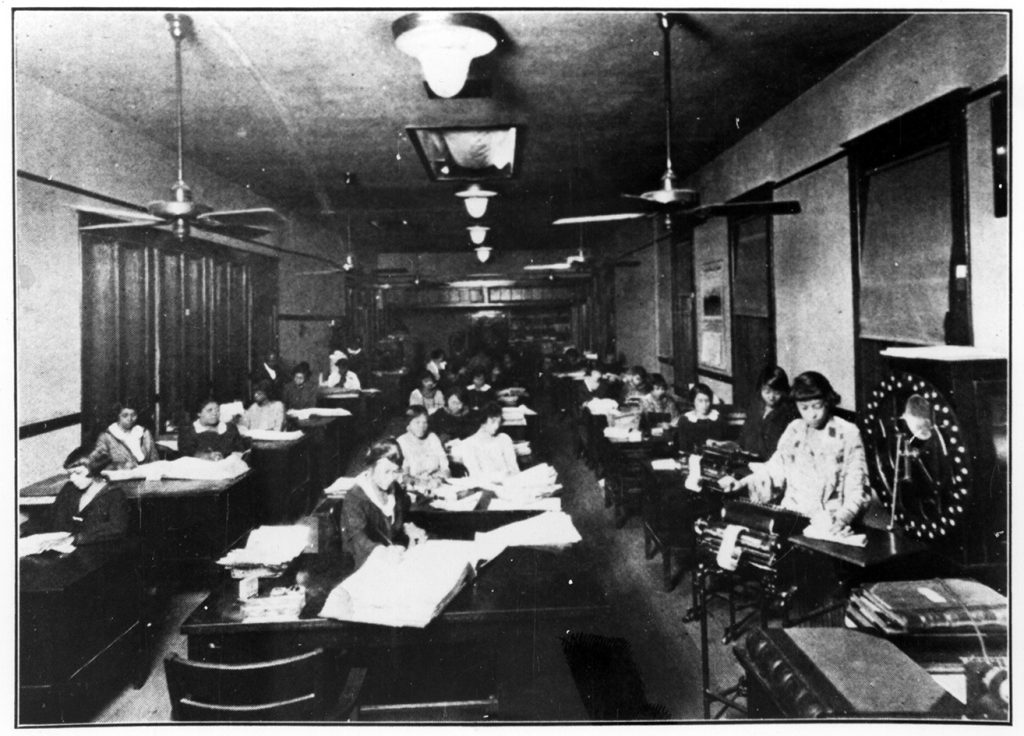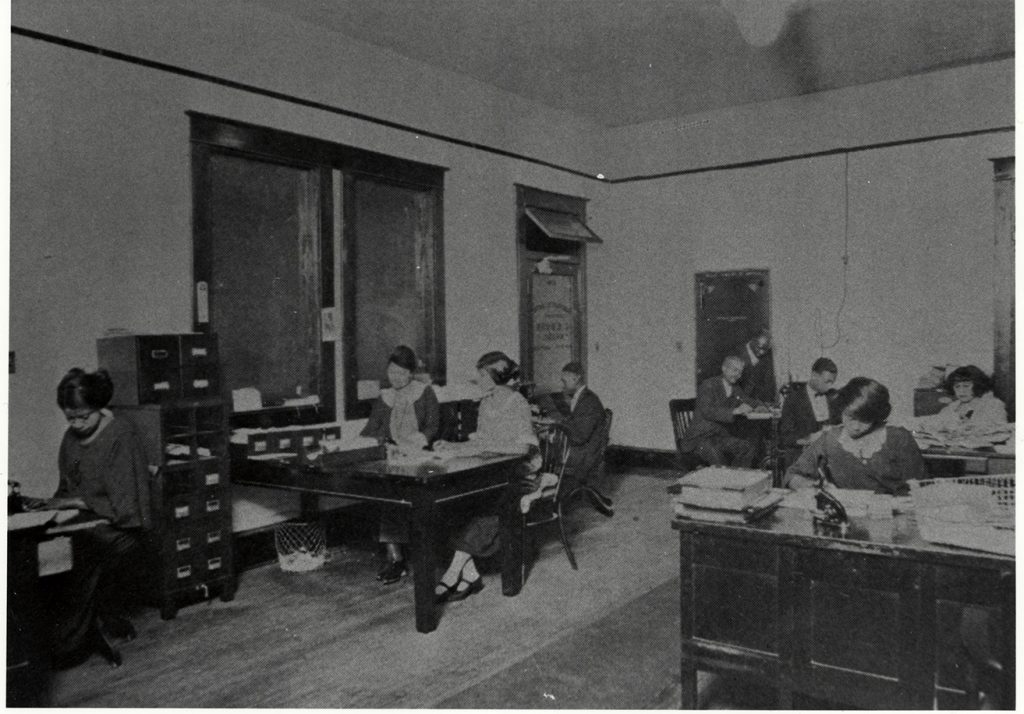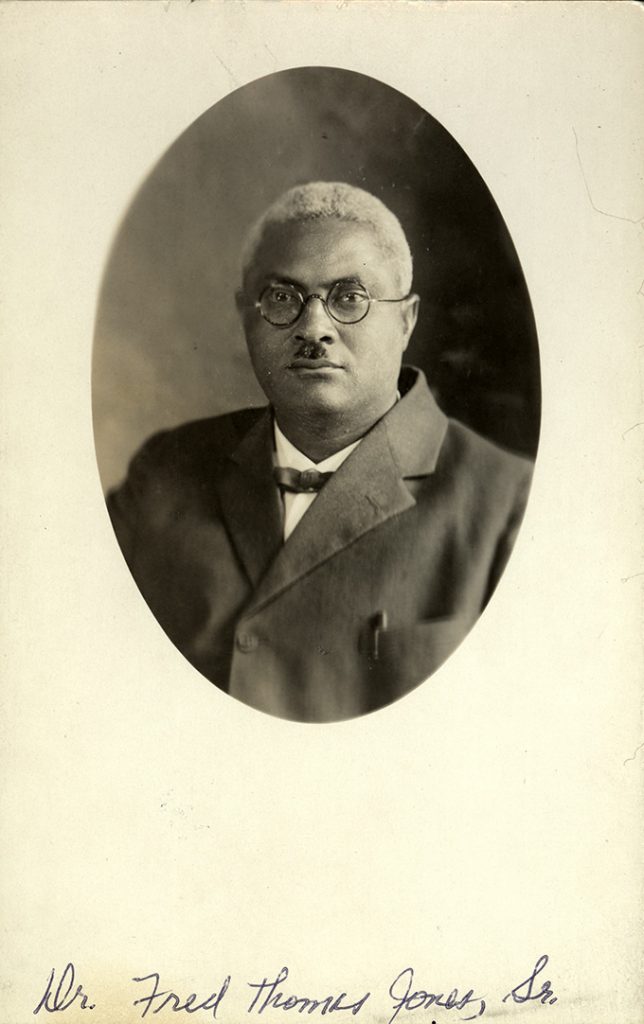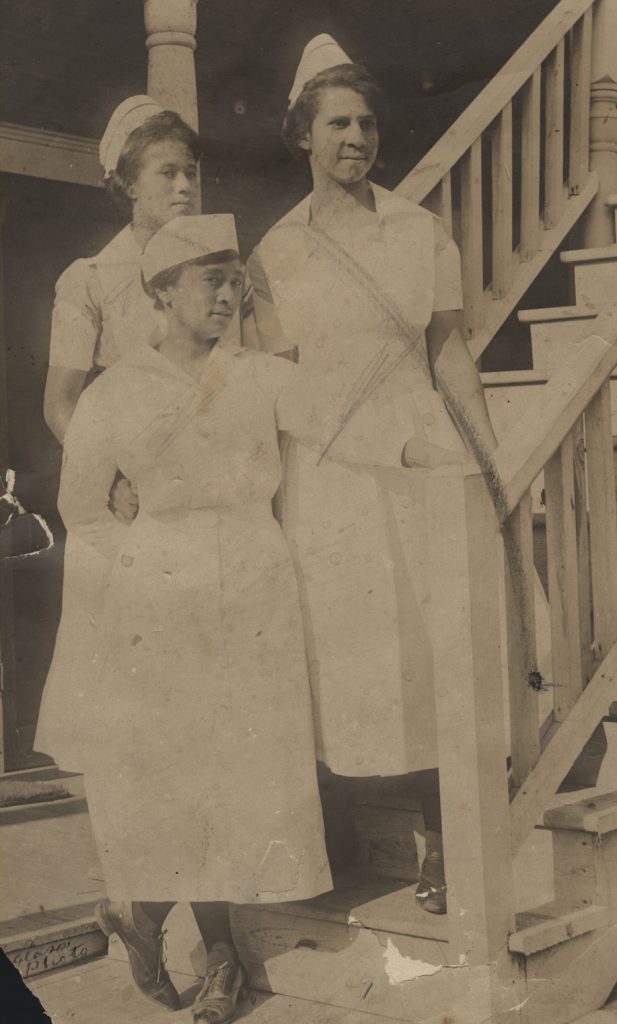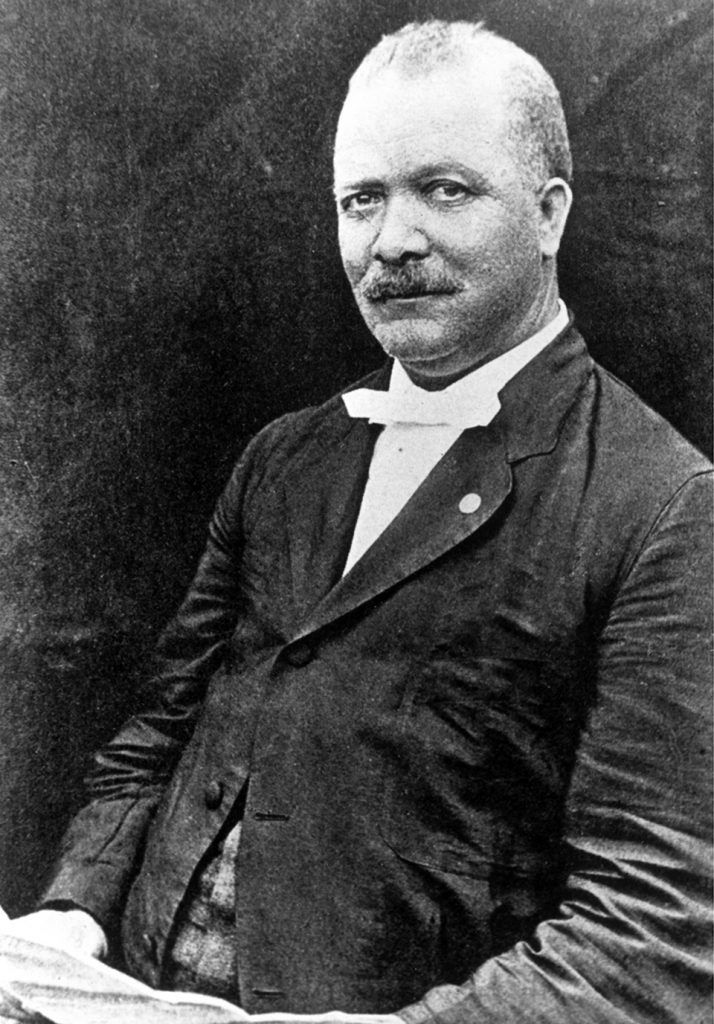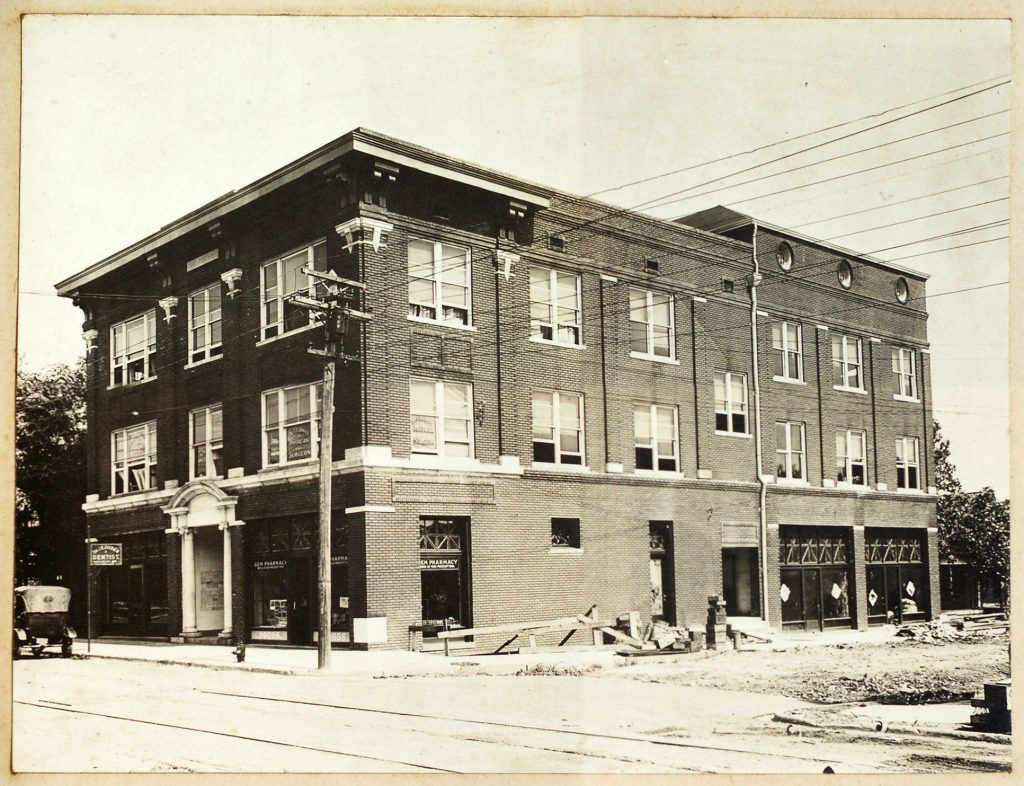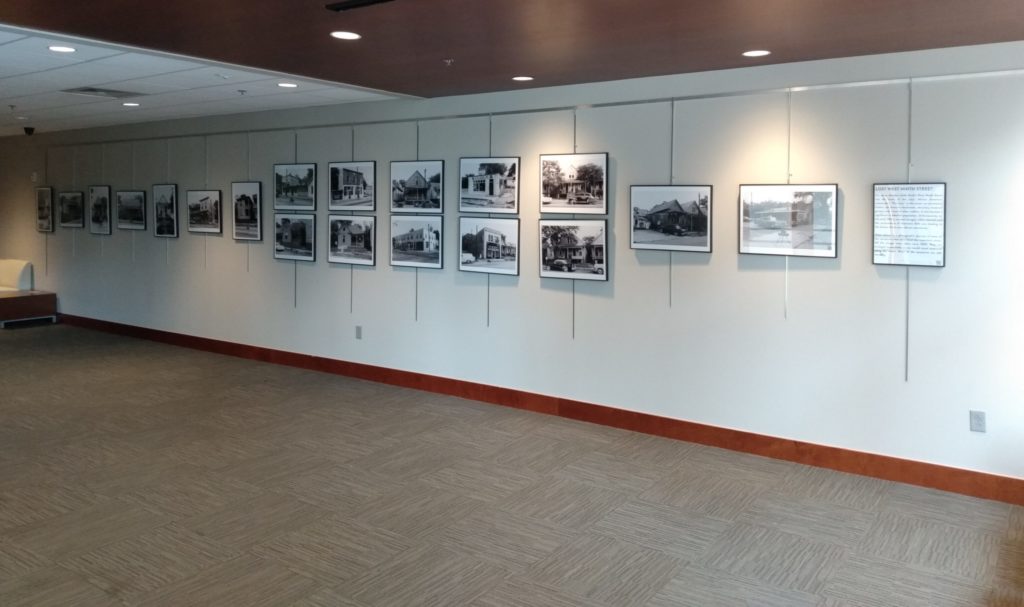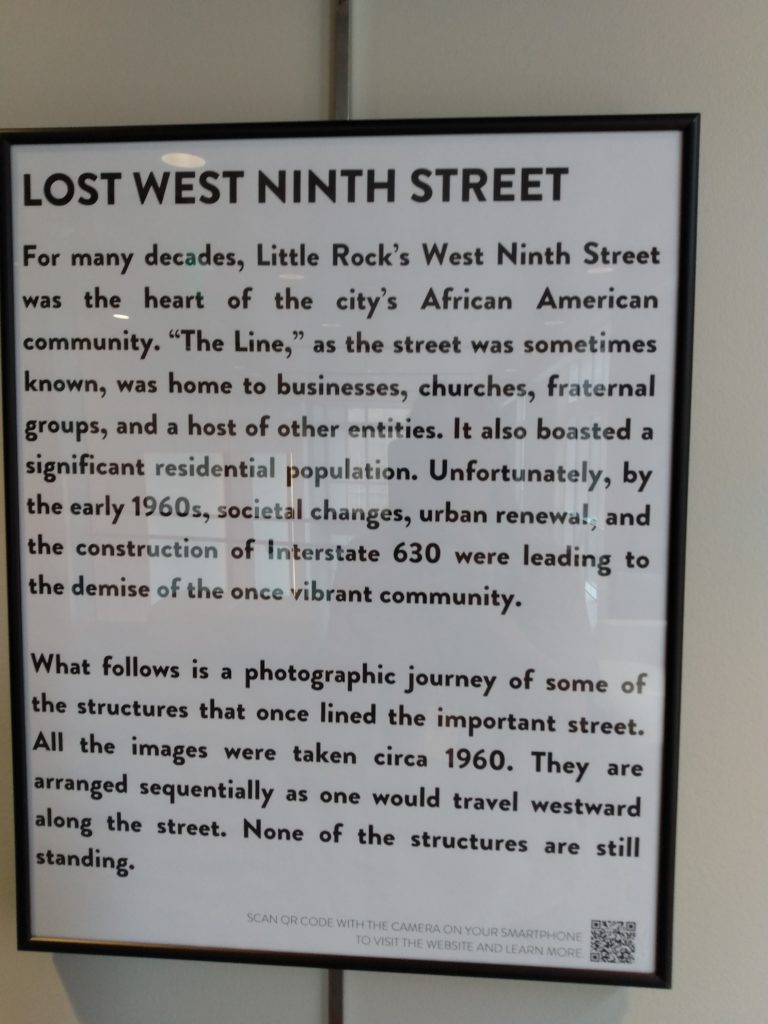calsfoundation@cals.org
Mapping Our History: Little Rock’s West Ninth Street, plus a New Photo Exhibition
As one of its mapping projects focusing on community history, the CALS Butler Center for Arkansas Studies created a digital exhibit documenting the history of Little Rock’s West Ninth Street, once a center of commerce and culture for the city’s African Americans. The project uses a mapping program to create an interactive narrative, useful for providing context and illustrating spatial relationships.
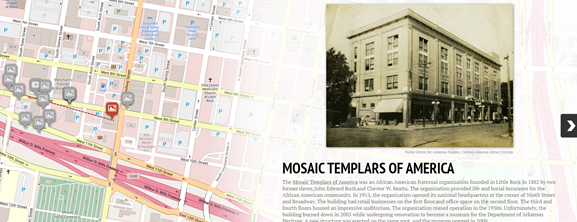
During the Civil War, the area around what became West Ninth Street was settled by recently freed slaves. Over time, more African Americans moved into the area. Eventually, the corridor along West Ninth Street became the business and social center of Little Rock’s Black community.
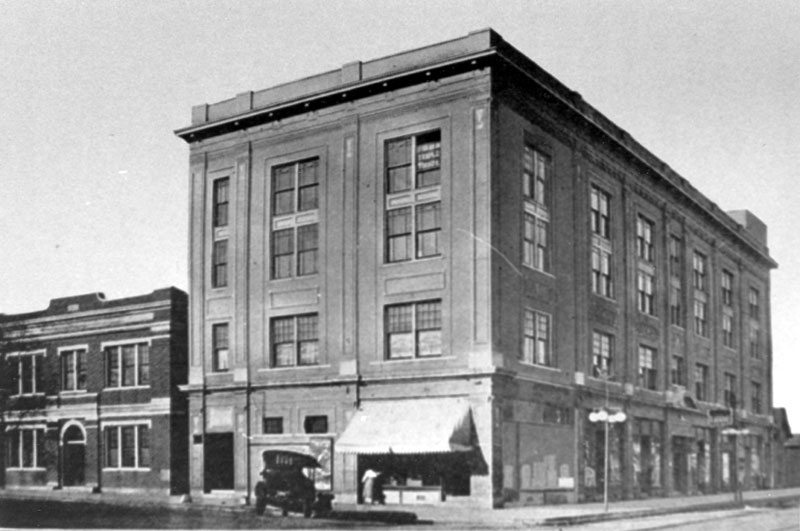
Looking west along Ninth Street from Broadway today, the area is but a shell of its former glory. The Mosaic Templars Cultural Center, rebuilt on the site of the original temple after a disastrous fire in 2005, anchors the corridor, much as the original Mosaic Templars building did during Ninth Street’s heyday.
During its golden age, West Ninth Street was home to an assortment of Black-owned businesses and was the place where Little Rock’s African American community went to eat, shop, and play. Restaurants, beauty parlors, grocery stores, medical facilities, and law offices populated the area, which also had a movie theater and several churches.
It has sometimes been said that there were two Ninth Streets. There was the daytime version when families could be seen patronizing the various businesses, and then the nighttime version when the corridor became alive with music. Taborian Hall, which housed a number of Black-owned businesses on the first two floors, was the site of much revelry. The third floor was known as the Dreamland Ballroom. There, musical artists such as Nat King Cole, Billie Holiday, Sarah Vaughan, and Duke Ellington entertained delighted audiences. The space was also used by social clubs as well as local basketball teams.
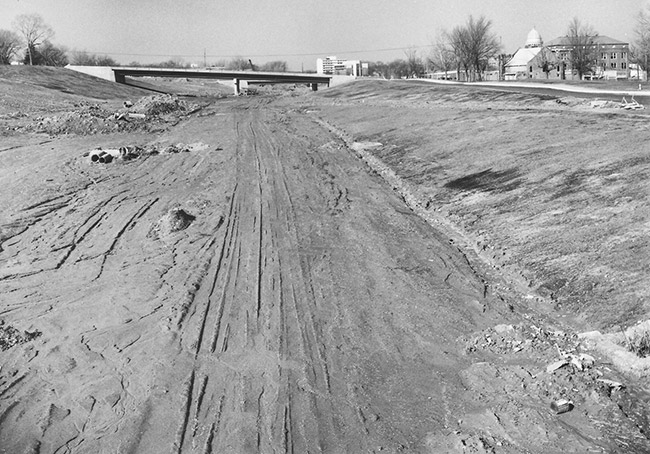
The 1950s brought the beginning of the end for West Ninth Street. Under the policies of so-called Urban Renewal, a number of buildings were torn down. The construction of Interstate 630 through the middle of the city also had a severe impact on the community. Many African Americans who lived in the area were displaced, and their movement to other parts of the city only aggravated an already precarious situation for the remaining businesses on West Ninth Street. Today, a number of vacant lots and grassy areas shroud what was a bustling area of business and entertainment.
***
The CALS Ron Robinson Theater recently installed an exhibition of Butler Center photographs of Ninth Street in its mezzanine lobby. The photos will be on display for theater patrons throughout the rest of the year. Clicking on a QR code on the accompanying information panel will take patrons directly into the West Ninth Street mapping project website on their phones.
***
Click here to view the West Ninth Street mapping project, along with several other community history mapping projects.
And read more about Ninth Street on the CALS Encyclopedia of Arkansas here.
By Brian Robertson, Manager, Research Services Division, CALS Roberts Library
